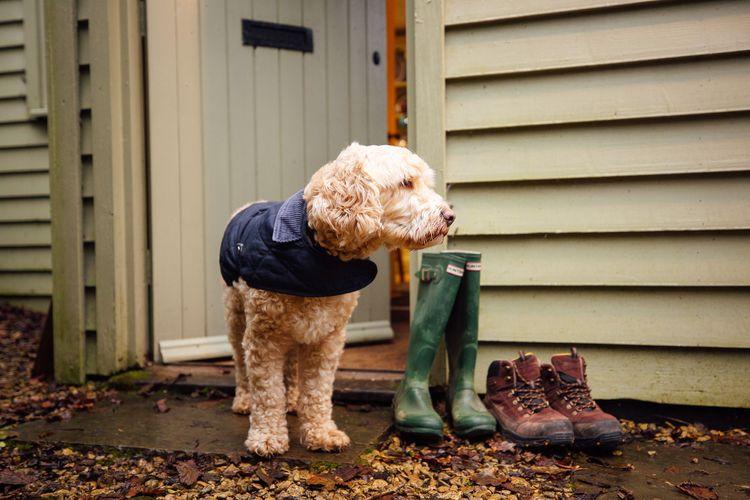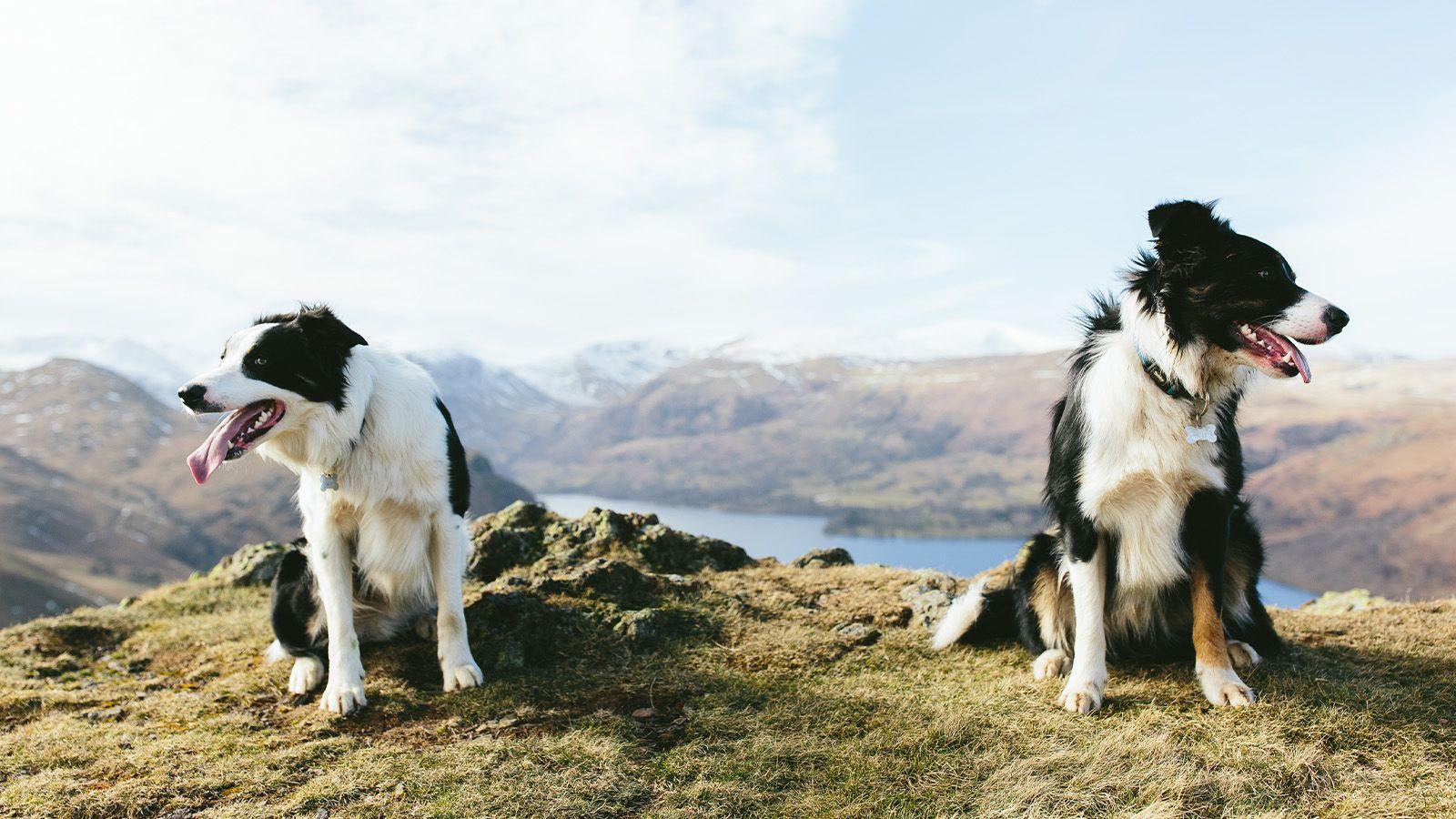
Hiking with dogs: what you need to know
5 minute read

What to pack when hiking with dogs
You're going to need a bit more than just a lead and a few poo bags on any dog-friendly hike, as just like humans, dogs will need sustenance and hydration on longer walks. Don't forget water for the dog as well as for yourself -- look out for a water bottle with a built- in bowl for ease -- and bring plenty of treats for recall if your dog is food motivated.
It pays to have a spare collar with ID tag and a second lead just in case you drop or lose one, and on longer hikes where you'll still be going during mealtimes, bring their food and a collapsible bowl. Don't forget, dogs shouldn't exercise too much within the 20 minutes after eating, so make sure you have an ample break before setting off again.
Poo bags are essential, of course, and a Dicky Bag is a brilliant stink-free way of carrying dog mess when there's no bin nearby.
How far can I hike with my dog?
This really depends on the age, fitness and energy levels of your dog: some breeds will seemingly be able to go on forever, trotting by your side as your loyal walking companion, while for others – such as bulldogs or pugs – it may not be safe to walk such distances due to health considerations, such as breathing issues and a predisposition to hip dysplasia.
Generally, five miles (8km) is a safe distance for most dogs, while 10 miles (12km) is good for fitter, more energetic dogs. Do remember, though, that puppies should only really be exercised for up to five minutes per month of age, especially when they’re a larger breed like a labrador or retriever, while dogs over the age of two can hike for longer.

How can I find a dog-friendly hiking route?
There are millions of miles to be walked in the UK and beyond, many of them suitable for hiking with your dog, too. One of the easiest ways to find local trails is on the Ordnance Survey app, available on desktop, Android and Apple. For a fee, you'll get access to the premium topographical map with all footpaths, bridleways and permissive paths, and a great collection of pre-set walking routes set out by experienced hikers.
Not all trails are necessarily dog-friendly, though, and the OS maps won't show stiles and other tricky infrastructure that's harder for some dogs -- have you ever tried to lift a great dane over a stile? -- to overcome. In national parks, such as the South Downs, Dartmoor or the Yorkshire Dales, look out for route maps with the "Miles Without Stiles" logo on them.
For map-free walking, look for waymarked walks in areas of outstanding beauty or within national parks, National Trust properties or on Forestry Commission land. Other excellent walking guidance can be found on walkhighlands.co.uk for Scotland and AllTrails.com for international hiking with dogs.
Or find walk inspiration on our blog... Best dog-friendly walks in England > The Paws & Stay team's favourite woodland walks > Our favourite coastal dog walks in Cornwall >
Is it safe to hike with dogs in bad weather conditions?
We all love to hike when the sun is shining, but when you're hiking with a dog you need to be extra aware of the weather conditions -- especially the heat. If temperatures are above 20°C, it could be dangerous to rigorously exercise your dog, and when it's above 27°C, you should really keep them cool, hydrated and relaxed in the shade at all times, no matter how fit they are. Consult this diagram from VetsNow if you're unsure.
Other weather conditions can be dangerous for dogs, too. High winds can spook dogs or knock them off their feet, which can be dangerous around cliffs on the coastal paths. If there's a heavy rain forecast and you're planning a hike up a mountain, check with locals first as you might be at risk of flash flooding. It's worth noting that snow can be sore on dog's paws, so if you're hiking in the mountains in winter, consider investing in cold-weather paw boots.